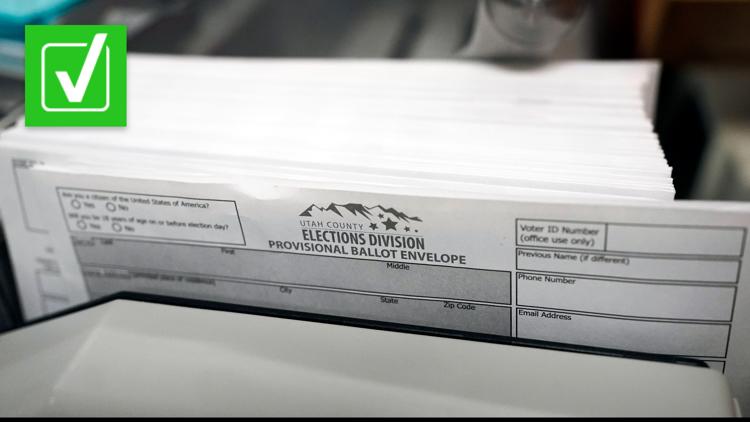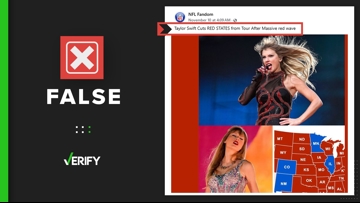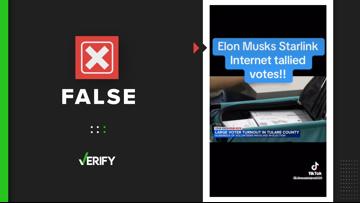In the weeks before the Nov. 5 presidential election, Google Trends data showed a spike in searches about provisional ballots. A provisional ballot is a way for states to ensure all voters are given a chance to cast a ballot even if their eligibility to vote on Election Day is uncertain.
But some people on social media who were given provisional ballots when they tried to vote on or before Election Day are questioning whether they are actually going to be counted and when.
VERIFY reader Sean sent us an email asking if provisional ballots are typically counted after Election Day.
THE QUESTION
Are provisional ballots counted after Election Day?
THE SOURCES
- Help America Vote Act of 2002
- U.S. Election Assistance Commission
- National Conference of State Legislatures
- MIT Election Data + Science Lab
- The Council of State Governments
- Maricopa County Elections
- Government of Cochise County, Arizona
- The Elections Division of the Georgia Secretary of State’s Office
- Michigan election law
- Nevada Secretary of State
- North Carolina State Board of Elections
- Pennsylvania Department of State
- State of Wisconsin Elections Commission
THE ANSWER
Yes, provisional ballots can be counted after Election Day.
WHAT WE FOUND
Provisional ballots cast on Election Day have to be verified by election officials before they are counted. That verification process typically starts after the polls close on Election Day and can go on for several days. If a voter’s eligibility cannot be established, then their provisional ballot will not be counted in the final tally.
Under the federal Help America Vote Act of 2002 (HAVA), nearly all states are required to offer voters a provisional ballot if there is uncertainty about their eligibility to vote on Election Day, according to the National Conference of State Legislatures (NCSL).
When HAVA was enacted, six states, Idaho, Minnesota, New Hampshire, North Dakota, Wisconsin and Wyoming, were exempt from the law’s provisional voting requirements because they offered same-day voter registration. However, some of these states still issue a small number of provisional ballots during each election, according to the U.S. Election Assistance Commission.
Provisional ballots are often issued to voters for the following reasons:
- The voter’s name is not on the poll or registration list.
- The voter’s eligibility cannot be otherwise established.
- The voter’s identity and/or eligibility to vote has been challenged by a poll worker or election official.
- The voter does not have identification as required by that state.
- The voter requested an absentee ballot but claims he or she either didn’t receive it or didn’t cast it.
- The voter’s address or name has changed but their voter registration information does not reflect the change.
- For primaries, the voter registration reflects an error in party listing.
Once a provisional ballot is cast, the NCSL says it is stored separately from other ballots until the polls close. If the voter’s identity and eligibility can be established through reviewing the voter rolls or verifying a signature, all or a portion of their provisional ballot will be counted usually within days of the election, the NCSL explains.
“Provisional ballots can take multiple days after Election Day to be counted due to the large quantity of provisional ballots cast and the time it takes to verify a voter’s eligibility,” the Council of State Governments says. “For each of these ballots, an election worker must verify the identity and eligibility of the voter. Only once this has been done can the ballot be counted and included in the final tally.”
In 2020, for example, more than 1.3 million provisional ballots were cast nationwide, according to a report published by the U.S. Election Assistance Commission. In 2016, over 2.4 million provisional ballots were cast.
The EAC says some of the most common reasons for rejecting a provisional ballot are: the voter was not registered; the vote was cast in the wrong precinct; the voter did not provide the proper I.D. within the allotted time after Election Day; the voter had already voted in that election; or there was no signature on the provisional ballot or the ballot envelope.
Under HAVA, states are required to inform voters if their ballot was counted or rejected and why, according to the Council of State Governments.
Each state sets its own standards, guidelines and timelines for processing provisional ballots. The NCSL says some states base this timeframe on how long the voter has to prove eligibility, while others use the same timeframe as the official election canvass of votes and certification of results.
VERIFY looked into how long it typically takes to process provisional ballots in the seven swing states — Arizona, Georgia, Michigan, Nevada, North Carolina, Pennsylvania and Wisconsin — after an election:
- Arizona: Ten business days following the general federal election and five days for all other elections.
- Georgia: Three days to prove identity or for the county registrar to verify registration.
- Michigan: Six calendar days after the election.
- Nevada: Six working days following the election.
- North Carolina: Vote counting at the precinct shall occur immediately after the polls close and shall be continuous until completed.
- Pennsylvania: Seven days.
- Wisconsin: At 4 p.m. the Friday after the election.
To see when provisional ballots are processed in your state, visit the National Conference of State Legislatures website or contact your local elections office.













